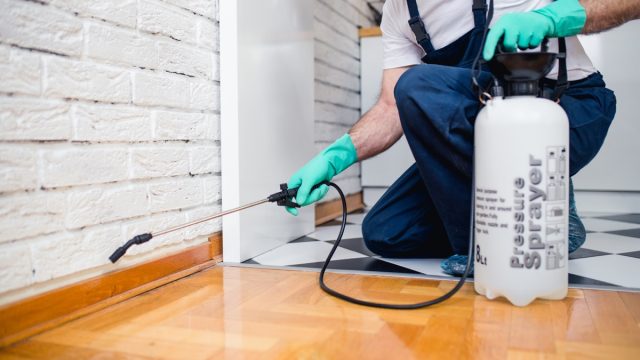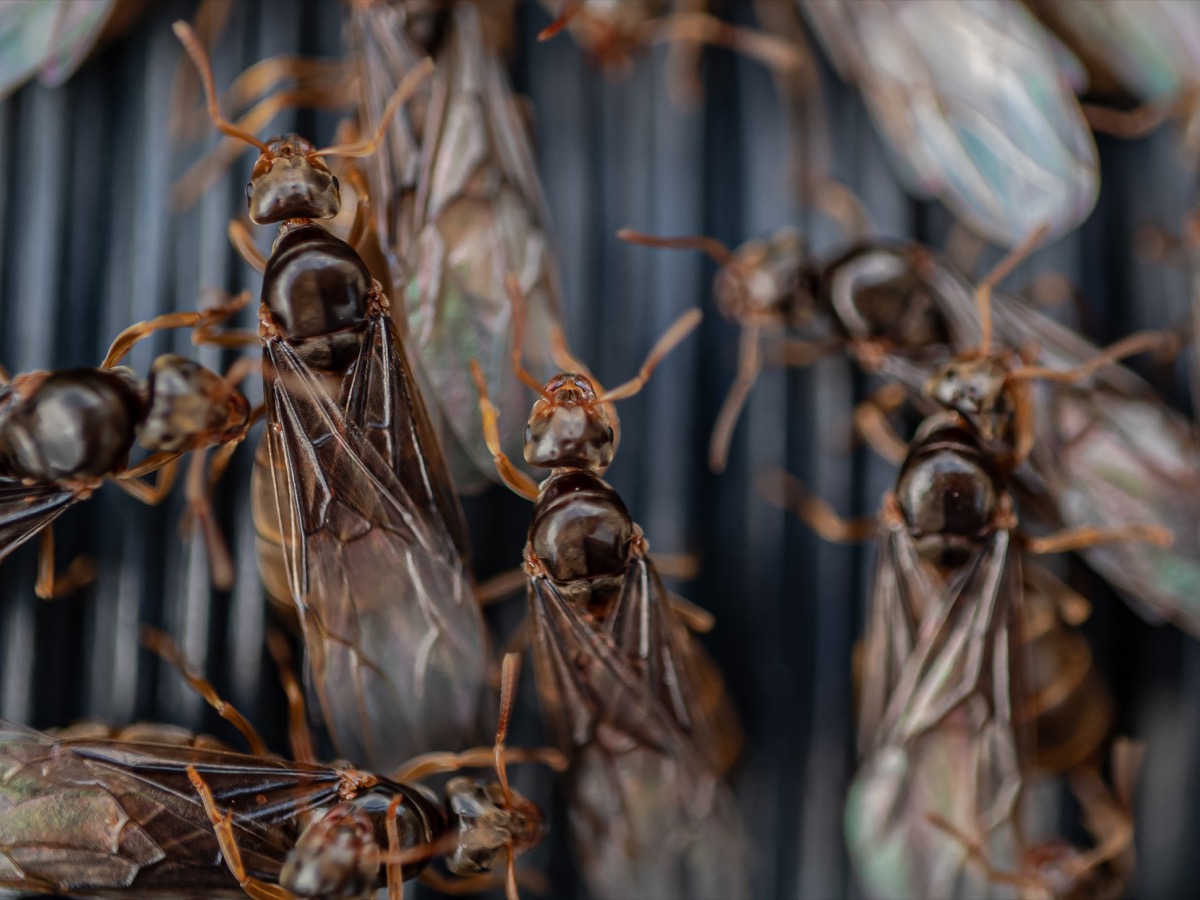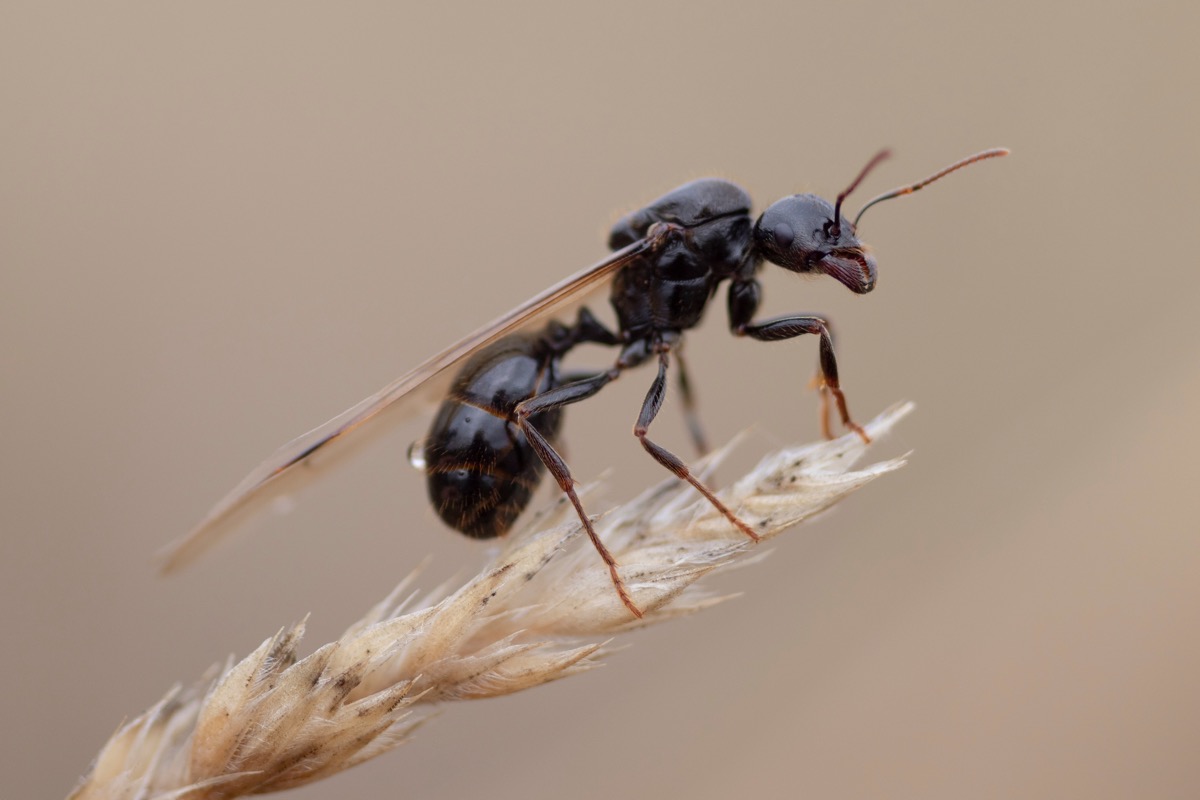If You See This Bug in Your Home, Call an Exterminator Immediately

Bugs are generally unwelcome houseguests, but there are certain types that are particularly objectionable—especially those that harm your home itself. Experts say there’s a common critter that does just that by gnawing through the wood inside your walls to make room for their colony’s nest—and it’s not a termite. But like termites, these insects can cause serious structural damage, yet unlike termites, they may not set off alarm bells when you see them. To make matters worse, experts say that if you see one in your home—especially during a certain time of year—there’s a good chance you’ll be seeing many more of them soon. Read on to find out which bug means you should call the exterminator immediately, and what else you can do to keep your home free of these house-harming pests.
RELATED: This Popular Destination Has the Biggest Bed Bug Problem in the U.S.
If you see a flying ant in your home, call an exterminator.

It’s not uncommon to see ants in your home—just like any other creature these unwanted pests will go wherever they can find food, water, and shelter. But experts warn that there’s one type of ant you shouldn’t ignore if you find it indoors: the flying ant, also known as a winged carpenter ant.
This type of bug only develops wings when they have reached sexual maturity, meaning a flying ant is ready to breed. Because winged carpenter ants swarm to mate, seeing one in your home could mean you’ll have a big problem on your hands in no time at all. Unless you want many more ants to arrive in your home soon, it’s time to call an exterminator—and quickly.
RELATED: 5 Things You’re Buying That Bring Bed Bugs Into Your House, Experts Say.
It’s even worse news if you see one in winter.

Experts say that while it’s never ideal to see a winged carpenter ant in your home, you may have an especially urgent problem if you see one in the winter. “During the winter, particularly in colder areas of the country, ants are not living and breeding in the open outdoors,” reports The Spruce. “So if flying ants are seen in your home during the winter, it is most likely that the ants are living within the structure of your home and, worse, it is very likely that there is a carpenter ant nest within the structure.”
On the other hand, if you see one winged ant in your home in the summer, there’s a higher likelihood that it flew into your home through an open window or crack somewhere. Still, look out for more bugs, which could signal a problem during any season.
Here’s what to look out for.

Often, flying carpenter ants are confused with termites—another type of bug that warrants a call to the exterminator. You can distinguish a flying carpenter ant from a termite by the dark color of its body, narrow waist, bent antennae, and short hind wings. Termites are lighter in color, have no defined waist, and have longer wings with uniform length.
You may also notice a carpenter ant problem by signs of damage in your home. “Of all the ant species, carpenter ants are one of the most problematic. They can cause serious property damage to homes and other buildings,” explains the National Pest Management Association. “Carpenter ants get their name because they excavate wood in order to build their nests. Their excavation results in smooth tunnels inside the wood. Much like termites and other wood destroying insects, this excavation can compromise the structural soundness of the wood over time.”
For more news sent directly to your inbox, sign up for our daily newsletter.
Take these steps to get rid of winged carpenter ants.

In order to get rid of winged ants in your home, experts from The Spruce recommend a three-pronged approach: stopping the immediate swarm, attacking the colony, and addressing any damage they’ve done.
Begin by vacuuming any swarms of ants using a handheld vacuum or a full vacuum with a hose attachment. Promptly empty the vacuum bag outside—ideally somewhere far from your home, so they don’t simply re-enter the space.
Next, it’s time to get rid of the ants you can’t see—the ones behind your walls. To do this, experts say you can set an ant bait they’ll take back to the nest; this is typically made of borax, which disrupts an ant’s reproductive cycle, and a sweetener to lure the insects. Your exterminator may also spray an insecticidal dust into the nest, if you’ve identified where that is.
Finally, you’ll need to fix any damage they’ve already done in your home, since decaying wood makes for an ideal home for an ant colony. Once you’ve done that, you can finally say your house is yours again, and yours alone.
RELATED: If You See This Bug in Your Home, Don’t Step on It, Experts Warn.